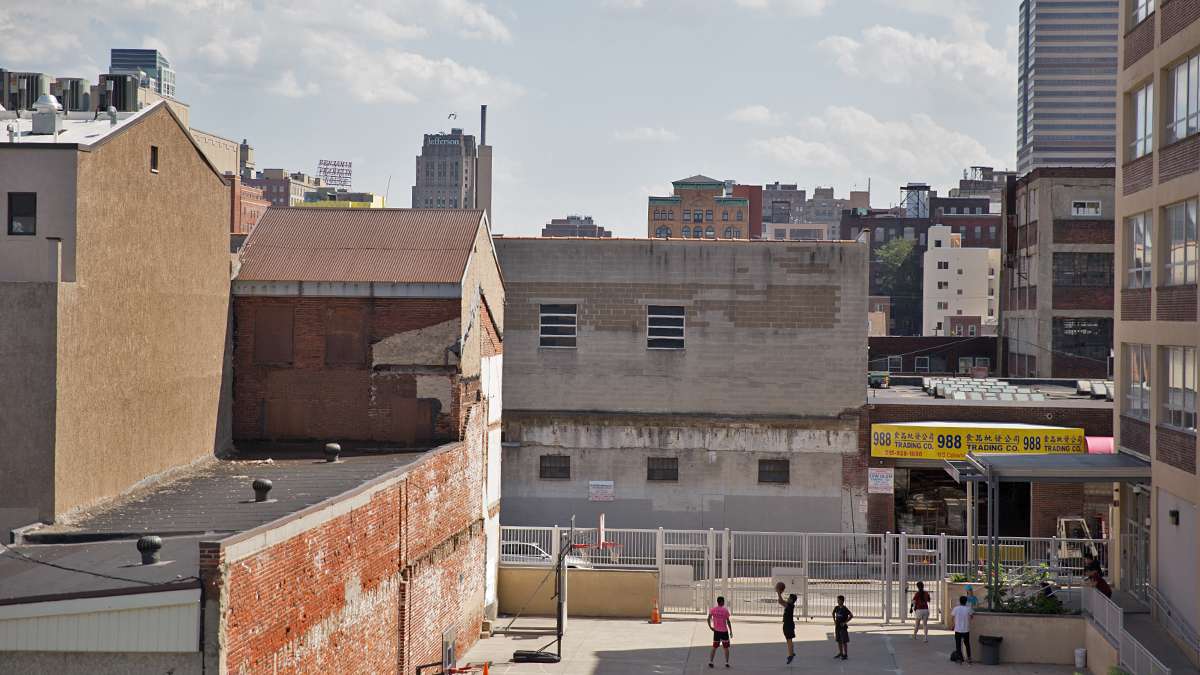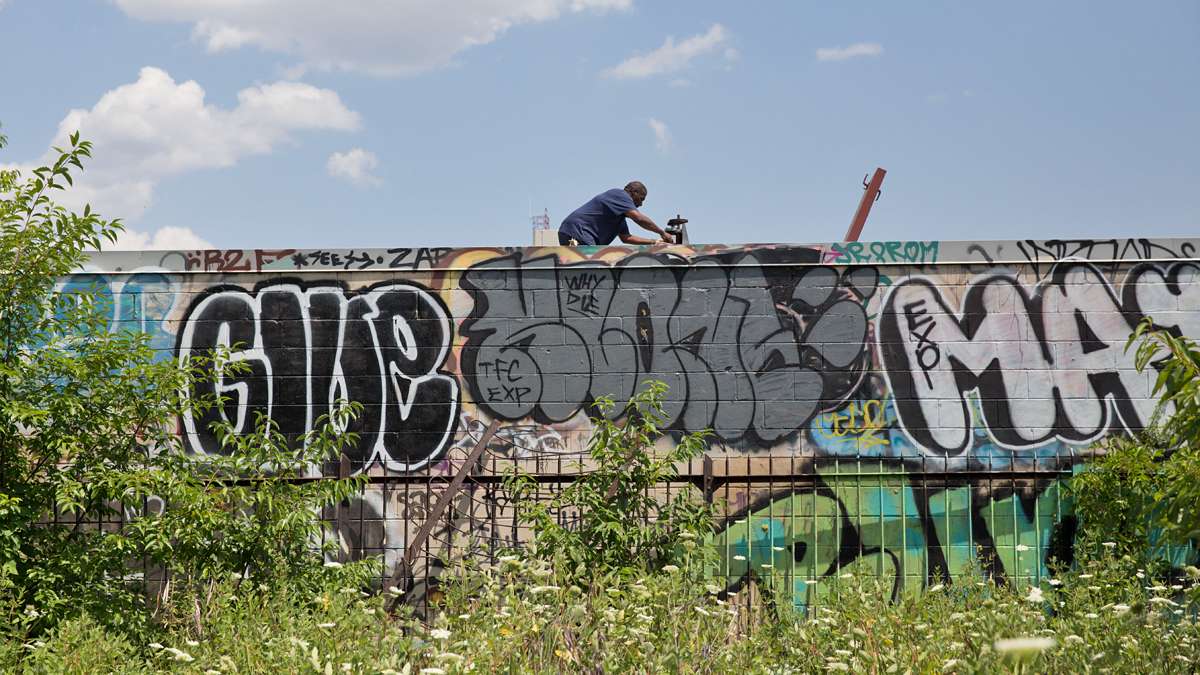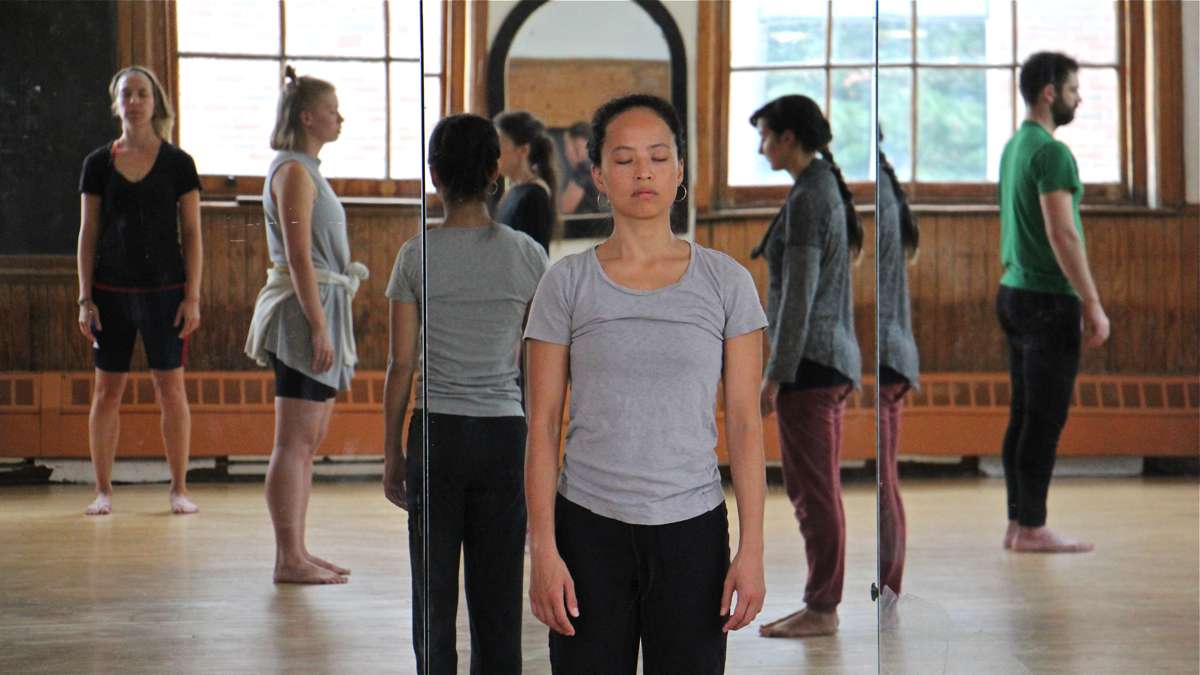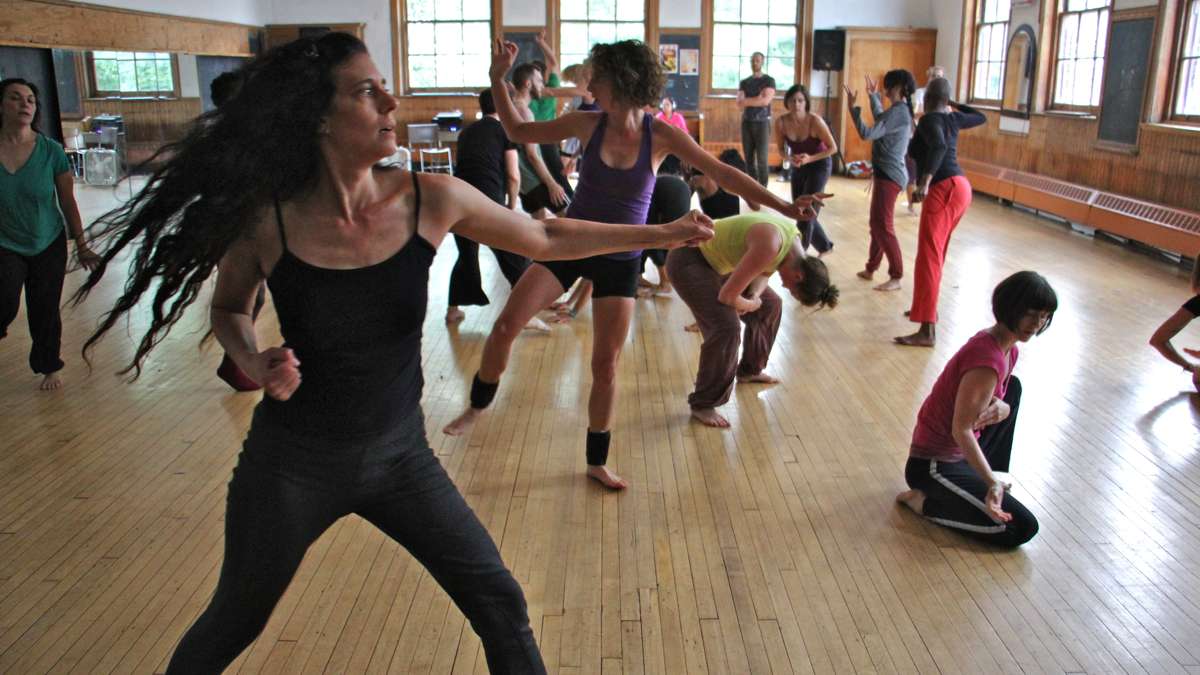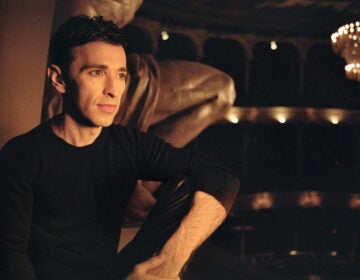Choreographing the chaos of conflict, Boris Charmatz brings moving sculpture to Fringe
ListenThis year’s Fringe Festival is peppered with experimental dance spaces — some in studios, others in enormous spaces like the Drexel Armory.
One of the highlights of the program is a work by celebrated choreographer Boris Charmatz. It combines intellectual concepts and intense physicality that invite audiences to sweat, so to speak, along with the performers.
Imagine a group of 24 dancers on stage, moving almost frantically in short intervals. Some of their movements vibrating with one another as each dancer starts the journey from a seat in the middle of the audience.
That’s the interaction French choreographer Charmatz has created with “Levée des conflits” or “Elevation of conflicts.”
He describes it as ” a very strange piece.”
“It came from an idea that a very big group of dancers keep moving, moving, moving but what would be created is almost a static object, like a sculpture, with different dancers and different movements and different statements,” Charmatz said. “All at the same time, like a moving sculpture.”
It is an uncanny experience, a tour de force for the dancers.
But Charmatz is more than a choreographer, he is a dance force in Europe. In his 40s now, he has been dancing and choreographing for more than 20 years, always pushing boundaries, he admitted.
He is part of a deliberate effort by the French government to create experimental choreographic centers across that country, said Nick Stuccio, artistic director of the Fringe Festival and a former dancer.
“It’s a federally funded system of 19, choreographic centers — imagine that. Each center has an artist, artistic director, and they’re allowed to experiment and research around their craft,” Stuccio said. “The result has been an enormous impact globally.”
Charmatz directs the Musee de la Danse in Rennes, one of the French choreographic centers.
Framing collision
As part of his Philadelphia performance and residency, Charmatz led a workshop and rehearsal with 24 of Philadelphia’s top dancers to prepare for a performance outside the Philadelphia Museum of Art. It was not an easy rehearsal; adopting Charmatz’s dance style requires some artistic fortitude.
“My idea of choreography is that it should be a frame for collision,” he said. “Instead of thinking a clear, clean frame design, it’s to set up a situation with chaos, accident, experience — even improvisation — in each part of the choreography.”
In his search for displacement and controlled collisions, Charmatz once created a dance where the performers put pants on their heads.
“So, with your right eye, you see a little bit on the left. And with your left eye, a little bit on the right. And it’s awful, because you don’t see anything in front,” he said. “You are alone, you feel your breath, you don’t know where you are going.
“You bump into each other, and we are like phantoms, and I love that,” he said. “Choreography that’s not clarity, but a chaotic way to think.”
It makes sense, Stuccio said.
Charmatz, like other contemporary choreographers, sees dance as a part of the fabric of our everyday somewhat chaotic lives, he said.
“Levée des conflits” runs Friday and Saturday nights at the Drexel University Armory.
WHYY is your source for fact-based, in-depth journalism and information. As a nonprofit organization, we rely on financial support from readers like you. Please give today.







